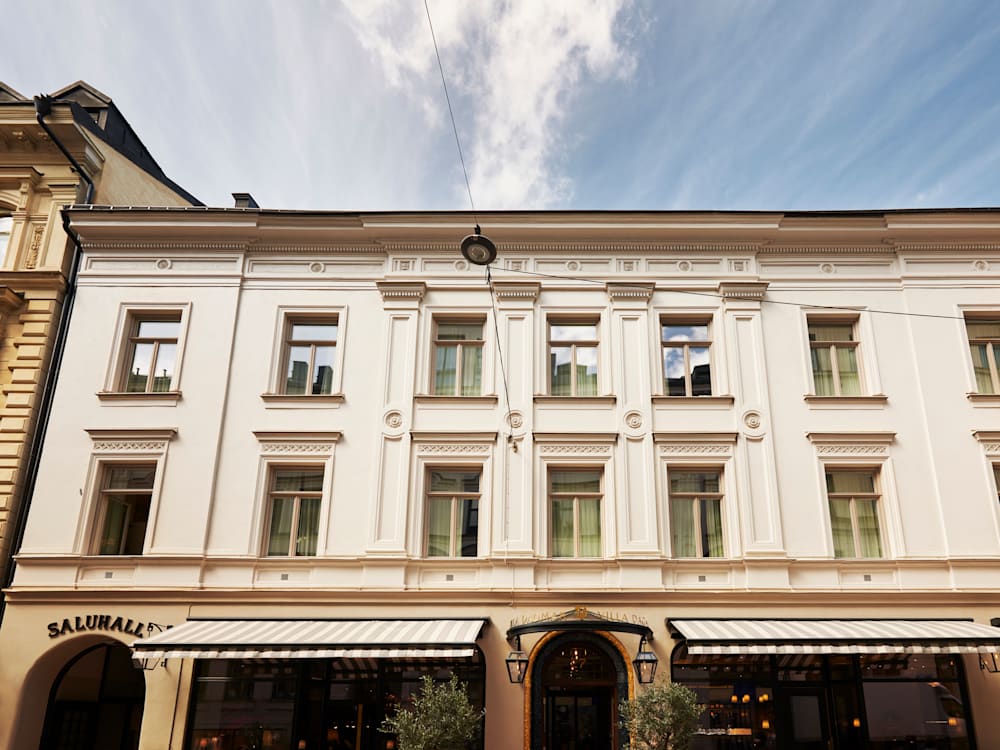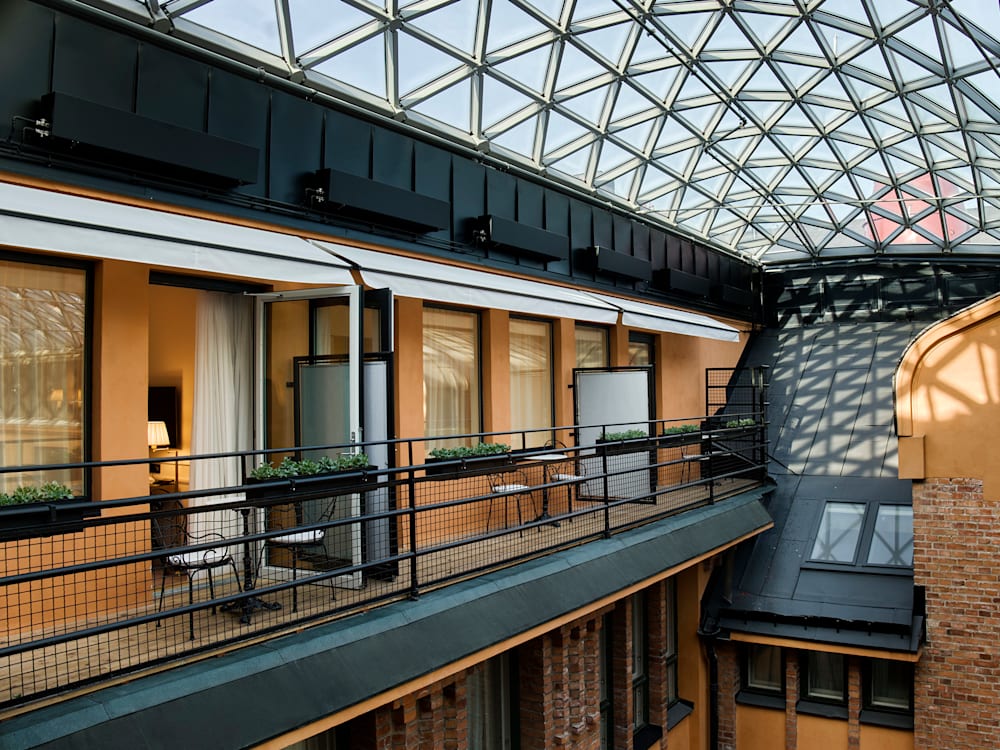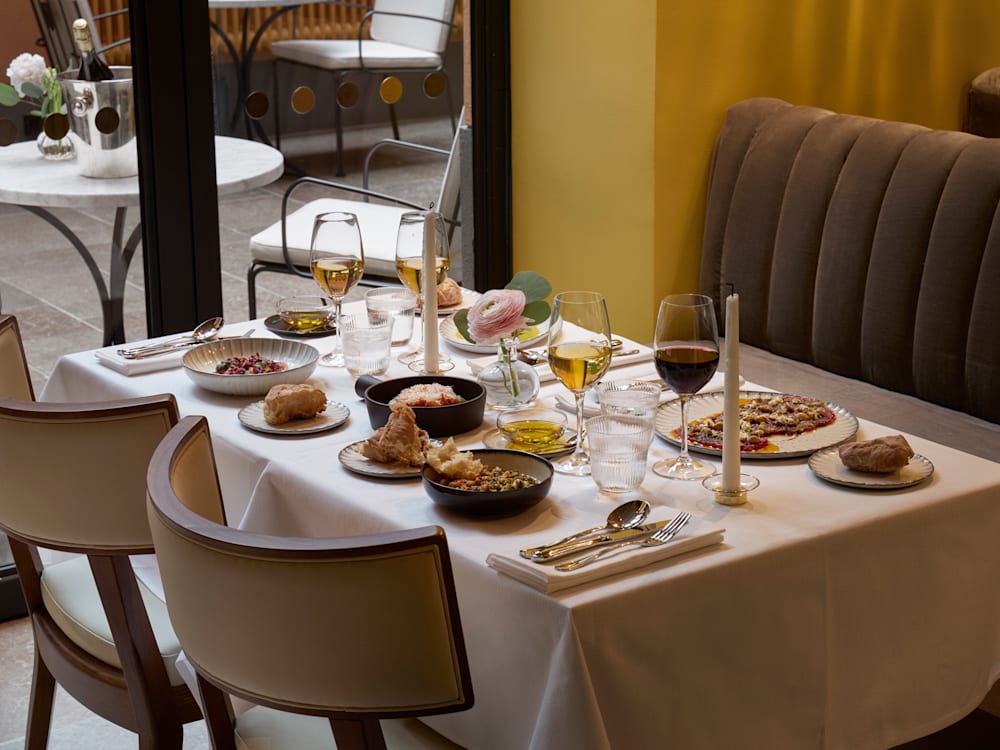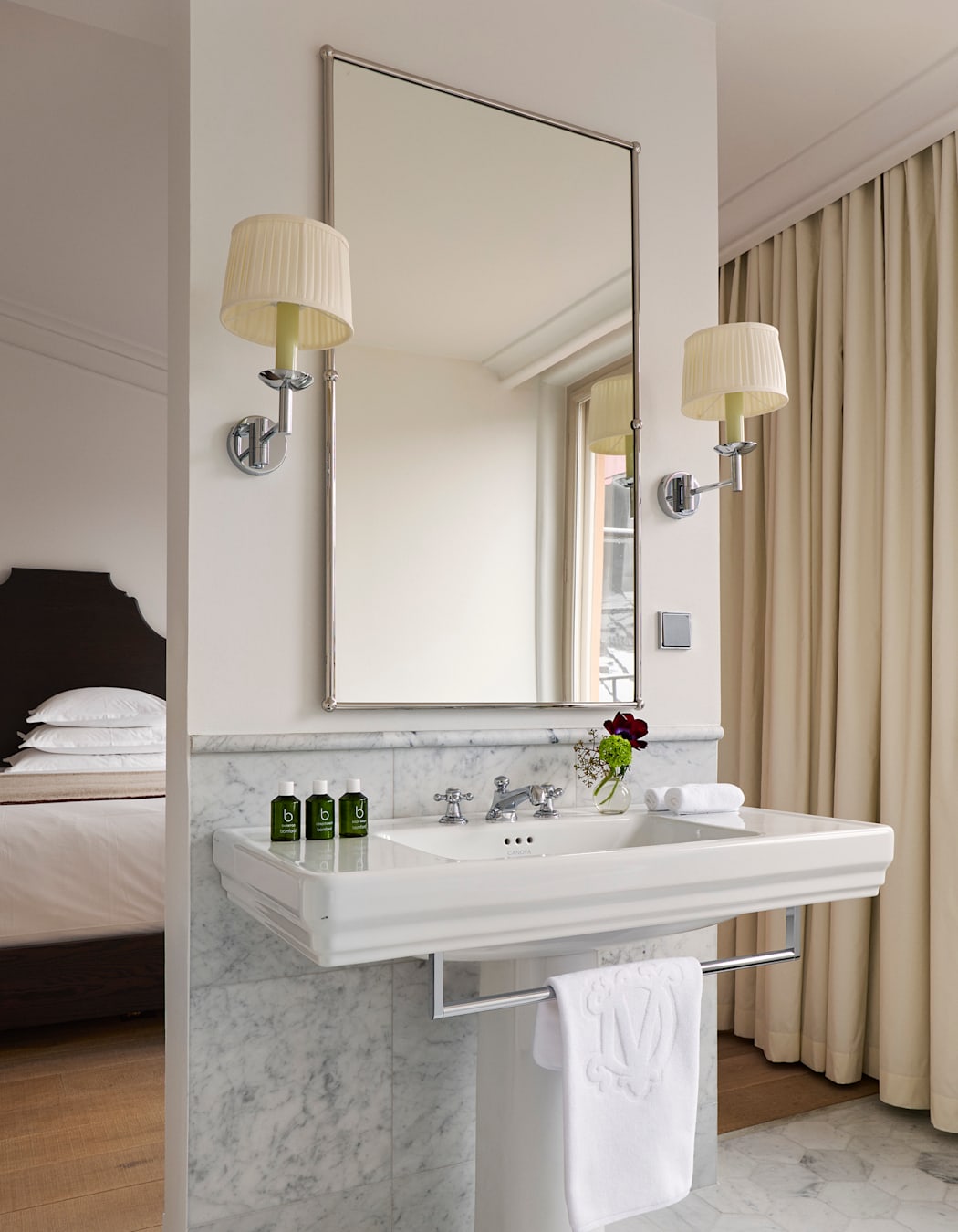‘Wasn’t it 4am in London five minutes ago?’, said Mrs Smith, as we glided into Stockholm on the airport express, gazing out at autumnal trees blazing with copper-fired leaves under a frosty blue sky.

The going is so preposterously smooth from the airport to Villa Dagmar that you hardly feel it: 17 minutes in the train from Arlanda airport, 10 in a taxi from the station (frankly, we could have happily walked, grabbing one of Stockholm’s beloved cardamom buns from a Fabrique bakery along the way). The 19th-century spires, turrets and high-roofed homes perched on cliff tops look lifted from the pages of a fairytale – so many of which stem from round these parts – as Stockholm stretches out sleepily across the water, endless islands in the shimmering light.
What I’m saying is that we were having a rather dreamy time as we arrived in Östermalm, the centuries-old market neighbourhood where Villa Dagmar (actually a 70-key hotel) is nestled, even before we made our way in off the cobbled street, skipped over a red carpet, and ducked out of the cold air. Dagmar, once home to a sweet factory and silversmith, is both a treat and a treasure, sparkling brightly at the heart of a Stockholm hotel scene it’s still relatively new to.

A soaring glass ceiling criss-crossed with lattice metalwork (inspired by the British Museum, of all places) arches over an indoor ‘piazza’, something of a nexus for hotel guests, chic fashion execs and stylish local twenty-somethings playing dice games alike, and inspired by an Italian villa in Capri. It’s charming. A clock tower and inward-facing balconies lean convivially over the covered courtyard. From Wednesday to Saturday the highly-regarded two-Michelin-star-holding chefs Daniel Höglander and Niclas Jönsson run their mouthwatering Salon restaurant here (sadly for us, we check in on Monday and out on Wednesday morning). A DJ supposedly pops by then too to liven things up, but both the place and pace are pleasantly glacial as we check-in (small dogs, in little baskets, are welcome at dinner tables). They’re so polite here that, if the hotel takes your breath away, someone will immediately be on hand to return it to you. A good thing too, as it does precisely that.
Rarely have I stayed somewhere that feels so snug and homey when it is plonked in the middle of hustle and bustle. The early wakeup is yesterday’s problem after a rejuvenating 45-minute sauna. The plush four-poster and marble bath tub can wait for later. There is simply too much to be excited about under one roof, let alone beyond it.

Have you ever wished for a sleepover inside a cultural cornerstone? Here you have it. From the reception, head through the placid piazza with its lapping fountain and wing a right (hotel suites are on your left and up a lift), and you will – during opening hours – walk straight into the historic Östermalms Saluhall, one of the city’s oldest food markets, home to a dozen or so fresh fish, meat and sweet stalls that have been doing business here since 1888. Both Mr and Mrs Smith ate our weight in oysters and ‘toast Skagen’ topped with löjrom (bleak roe) at fish restaurant Lisa Elmqvist.
Ferry, foot or electric scooter were our preferred means of tackling this proud old city (because Sweden remained neutral in the Second World War, Stockholm wasn’t bombed, and its skyline, here mediaeval, there neoclassical, here again Baroque, recalls centuries long gone). Little sailing boats shelter along the waterline just minutes walk from the lobby. You see the city twice: once before you and again below you, reflected in the vast surrounding waters where Lake Mälaren meets the Baltic Sea. This is a capital that holds on to the past like a life-raft, and the museums are epic: from the immense Nationalmuseum just minutes from the hotel, with art from the 11th to 18th centuries (Gainsboroughs and Rubens and Baroque masterpieces), to the Vasa Museum on tranquil Djurgården island minutes away. Here Mr Smith became extremely invested in the marvellously preserved Swedish galleon within, which sank in 1628 just metres from the harbour on its maiden voyage, toppled by a slight gust of wind. Mrs Smith will tell you that she had the time of her life at the Abba Museum. Mr Smith concurs.

Listen: the rumours are true, Stockholm is expensive. But there are bargains aplenty to be had: second-hand shopping in trendy Södermalm’s So-Fo – short for ‘south of Folkungagatan’ – and hiking up to the the nearby viewpoint at Skinnarviksberget for the view (please, for the love of all things hearty and good, do not miss the delightful and reassuringly affordable Meatballs for the People restaurant here for a quick lunchtime bite). When you can do it all on one of Villa Dagmar’s substantial breakfasts (say, an egg served with a side of Kalles Original caviar – a Swedish classic, roe squeezed out of a little tube), so much the better.
Stockholm is best seen after dark, on the bobbing ferry, when the city’s low, warm lights are just barely fending off the winter gloom, even as its inhabitants vanish from the streets like whispers in the night. Above, stars twinkled, as we made our way back to Villa Dagmar, before the kindly ferryman informed us that we’d gone completely the wrong direction and were heading south. No matter. We snuggled up and looked out across the water. There was time to spare.
Read more about Villa Dagmar or see our collection of hotels in Sweden.
Samuel Fishwick is a writer, editor and columist who’s covered a wide array of topics, including TV, music and wellness for the Evening Standard, Grazia, The Independent and more.

